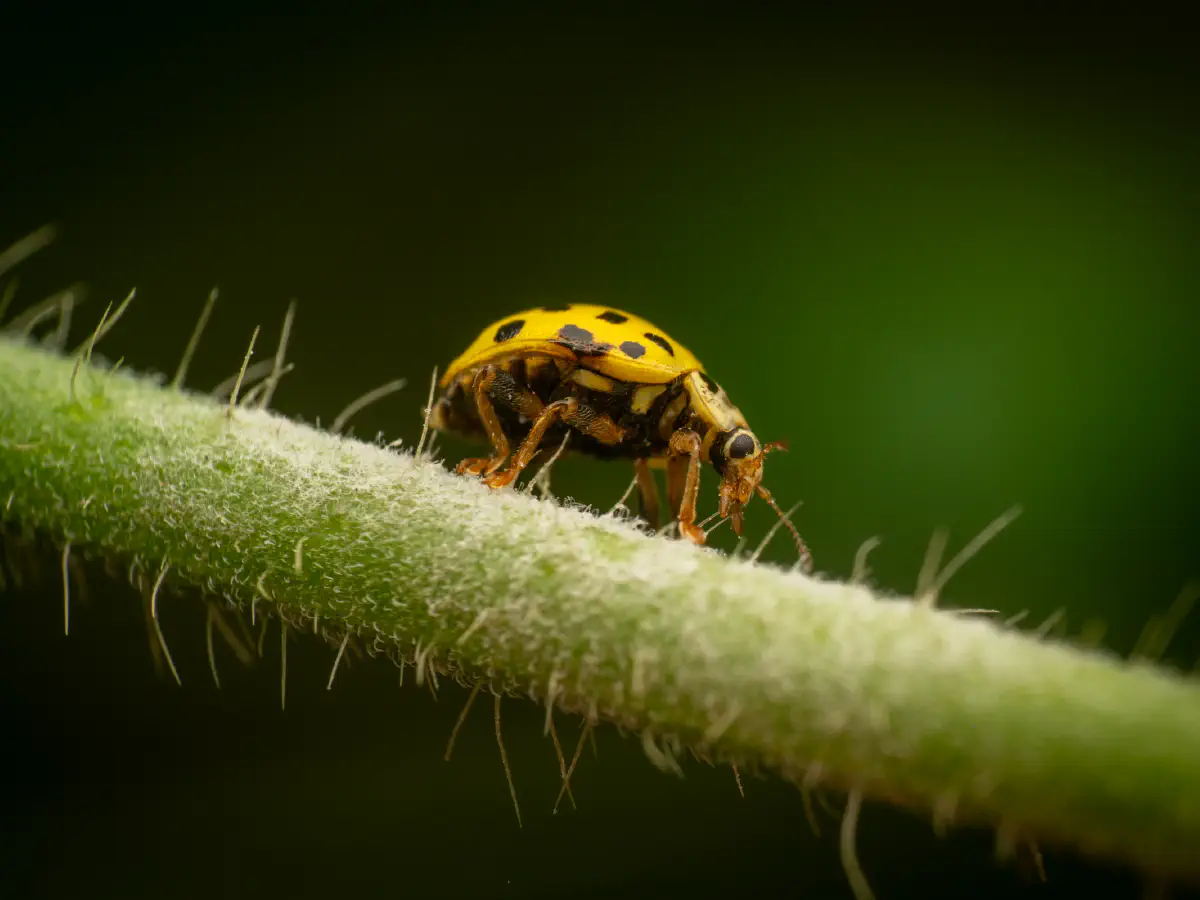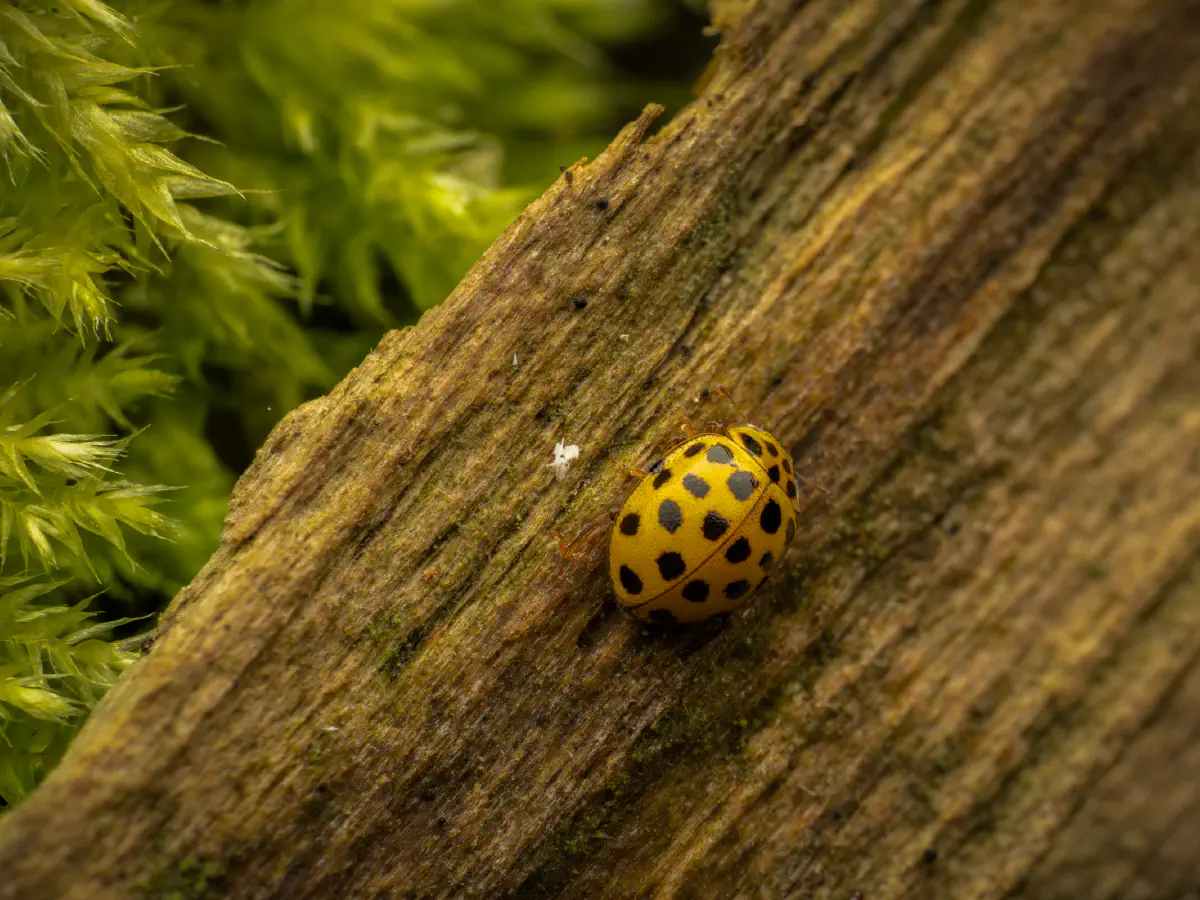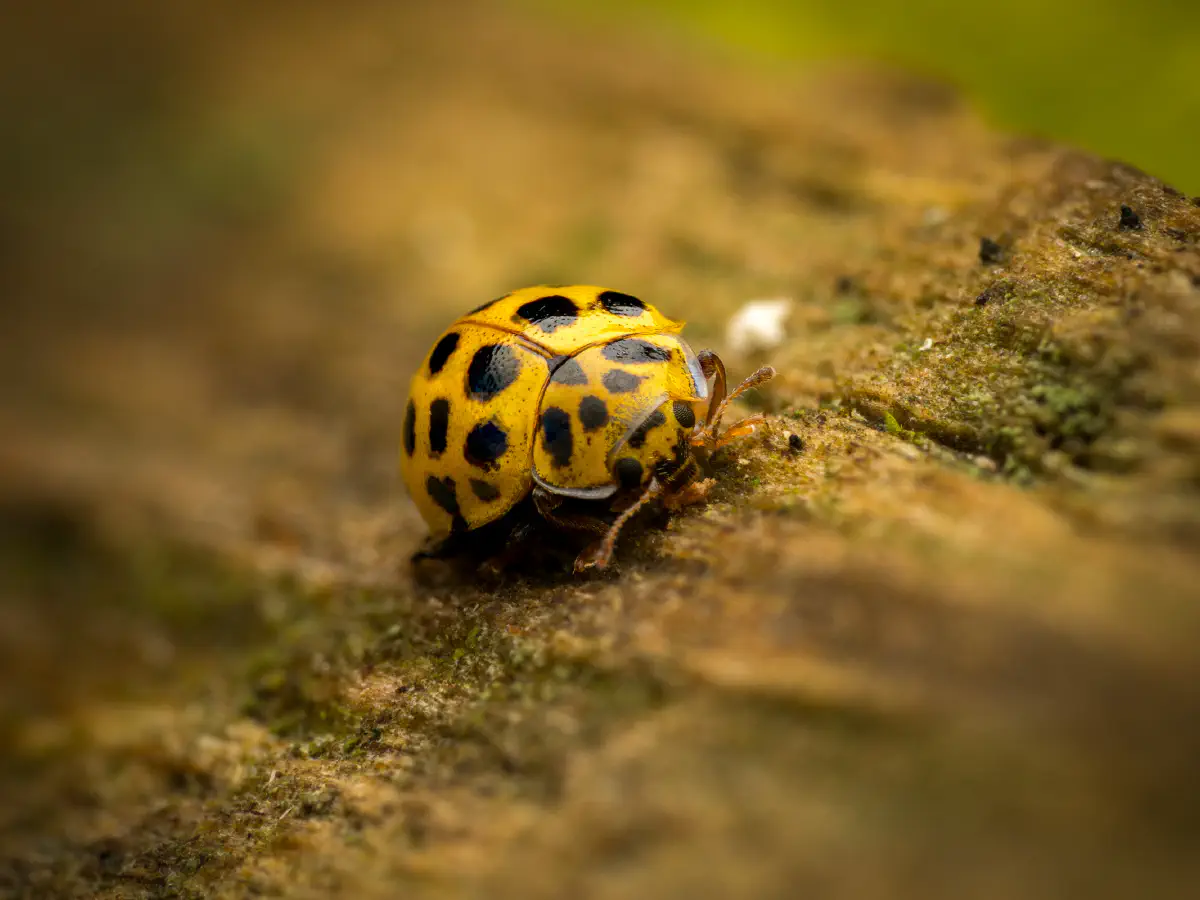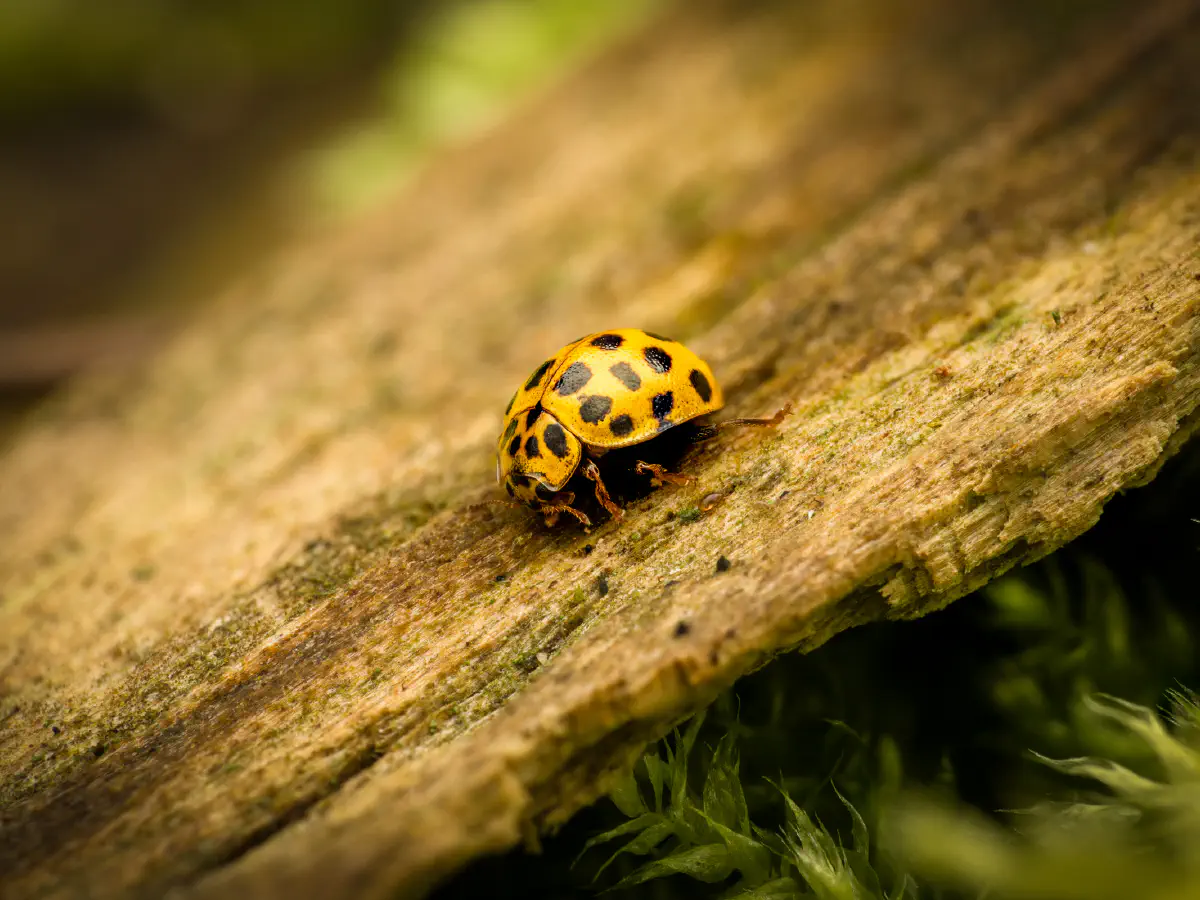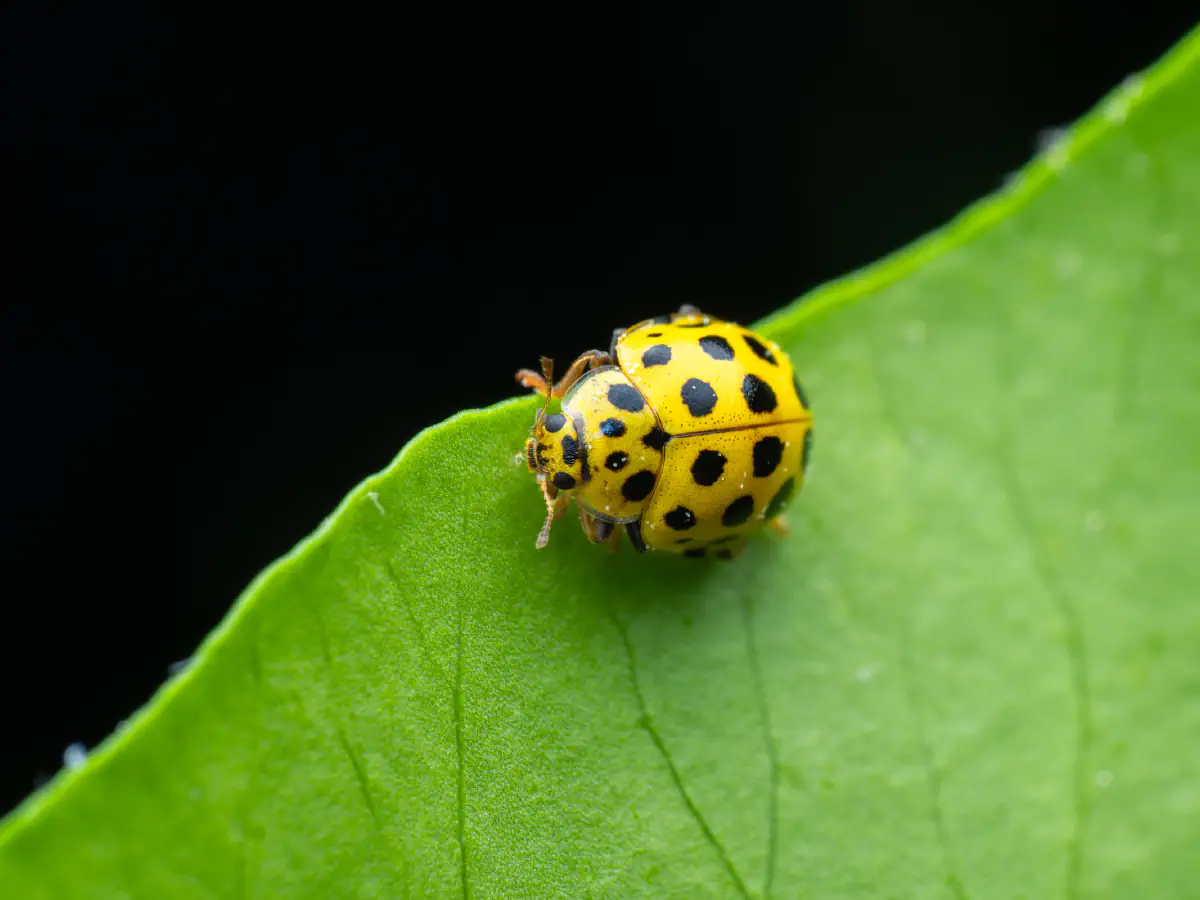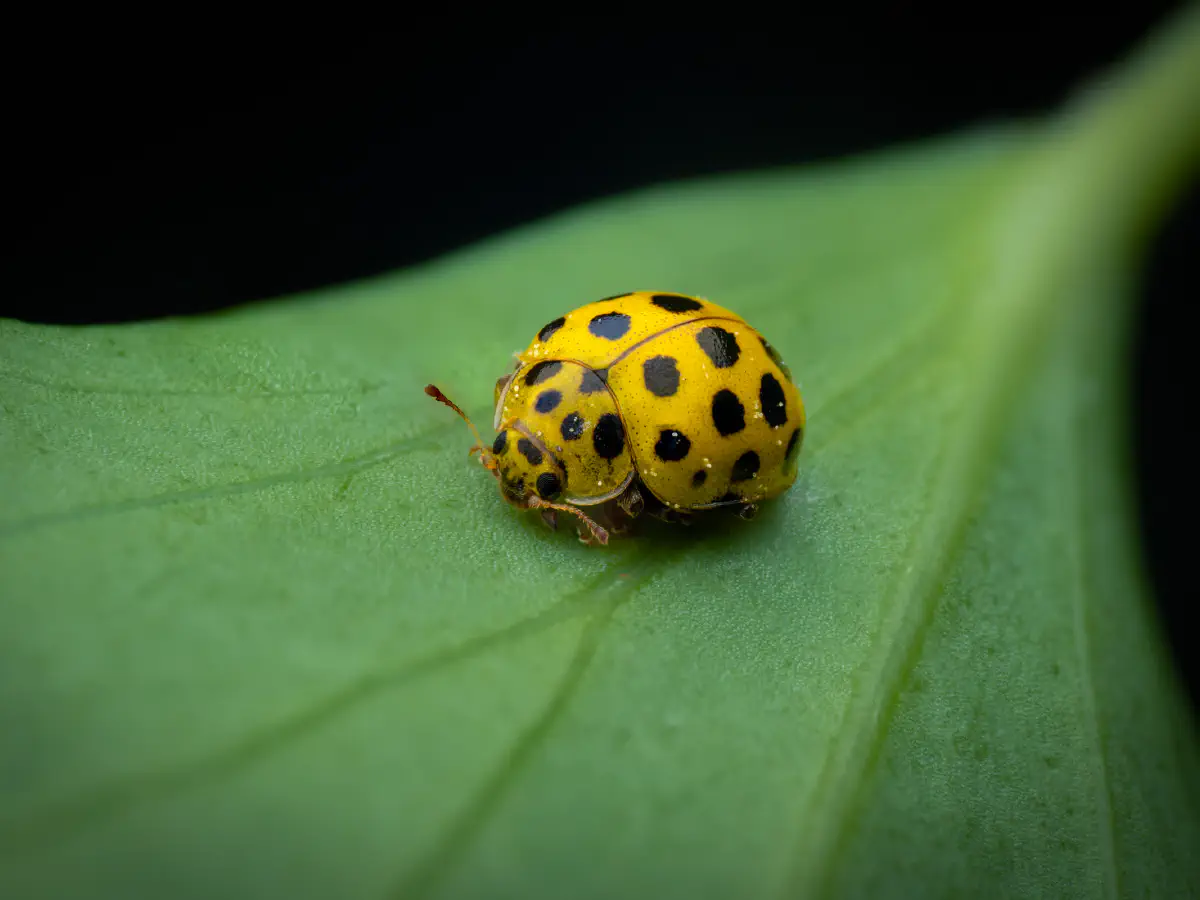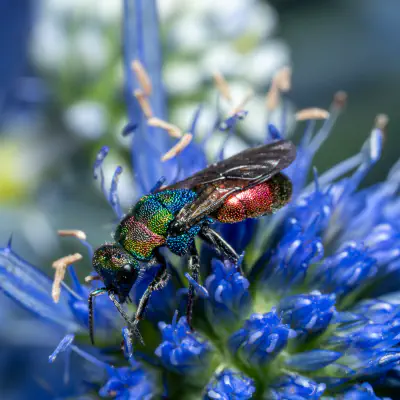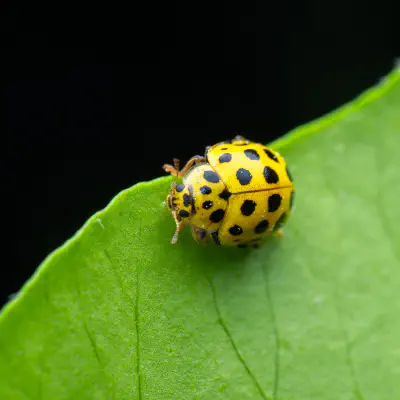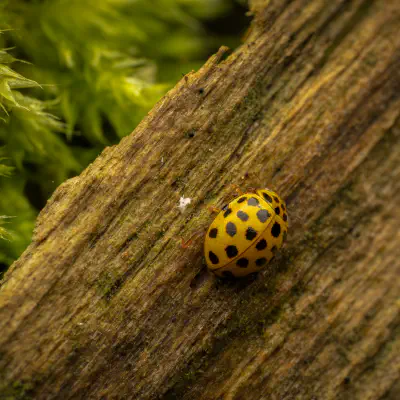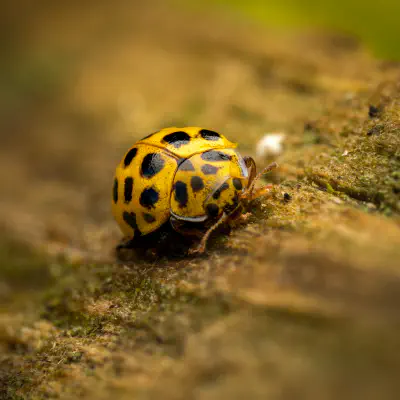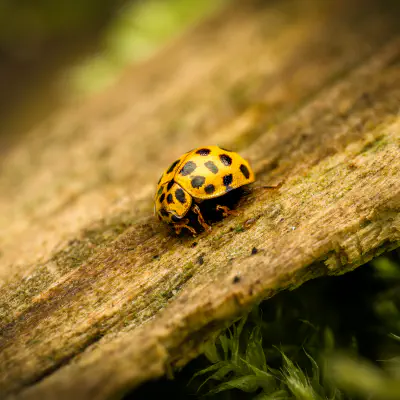The 22-spot ladybird has been featured on multiple postage stamps around the world. 2008 - Jersey. Listed under its former name of Thea vigintiduopunctata. Part of an illustrated six stamp "Insects" release. Designed by W. Oliver. 2015 - Belarus. A set of four illustrated and embossed "Insects; Ladybirds" (also sometimes listed as "2015 Beetles") stamps issued. Designed by Marina Vitkovskaya and Alexander Mityanin. 2017 - Slovenia. A set of three "Fauna; Ladybird" stamps issued. Designed by Robert Žvokelj. 2017
- India. A set of four illustrated "Ladybird Beetles of India" stamps issued. Psyllobora vigintiduopunctata had a face value of 15 Indian rupee. 2018 - Netherlands. Part of the "Experience Nature" series, featured in a ten stamp panel in the Insects and Spiders release. Designed by Frank Janse. 2024 - Romania. A set of four ladybird photographic stamps issued. Psyllobora vigintiduopunctata had a face value of 5 Romanian Lei. Designed by George Ursachi.
